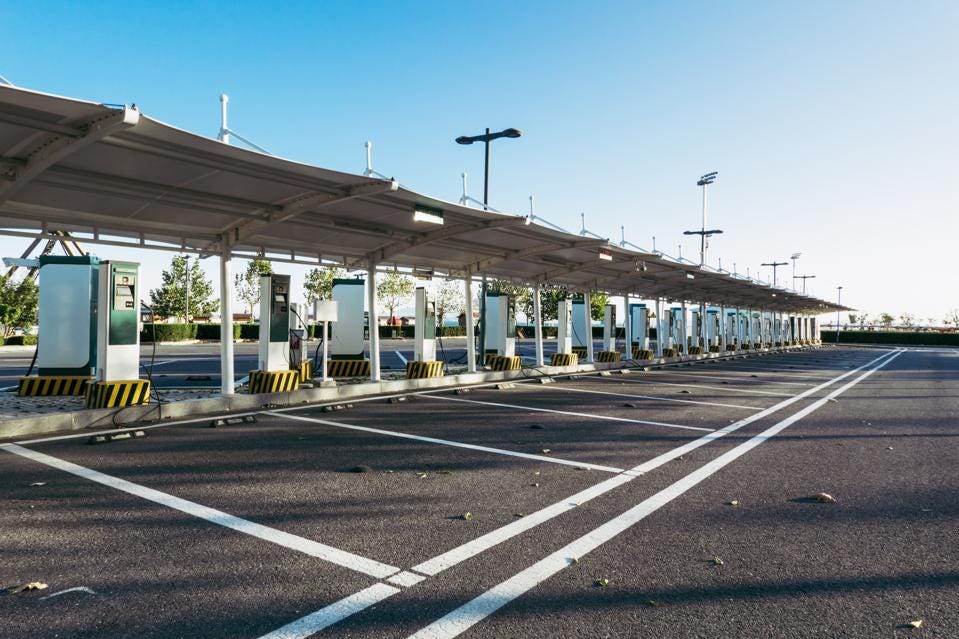The Next Supply Chain Crisis Is Hiding In Plain Sight
Forbes Business Council publishes article by Actify CEO Dave Opsahl
CEO at Actify, Inc., helping manufacturers to build some of the world’s most complex and advanced products.
Automakers everywhere are all in on electric vehicle (EV) production. Whereas dates like 2035 or 2030 used to be thrown around by original equipment manufacturers (OEMs) for the shift to all-EV models, the blockbuster success of cars like the Tesla 3 has moved those timeframes up. Carpe diem is the word of the day.
That doesn’t mean that internal combustion engine (ICE) models will disappear overnight. OEMs will continue to offer customers a choice between EV and ICE models until the full transition to electric occurs.
Supply Chain Capacity
The OEM perspective is that auto suppliers will have no trouble accommodating this shift, since much of the componentry for EVs is no different than for ICE vehicles. OEMs expect the market to follow its normal cyclical trends while the balance shifts to EVs in response to consumer preference and government incentives and regulations. The exception OEMs recognize is battery supply, and they are moving quickly to ensure capacity—hence the stream of OEMs opening their own battery plants. But batteries, electric motors and chips aside, the assumption is that the body, chassis and interior components needed for EVs will represent business as usual.
However, overall supply volume is not the sole, or even primary, determinant of supply chain capacity. A misreading of the true constraint on capacity has the potential to create a supply chain crisis that could throttle the momentum of the accelerated EV timeframes sought by OEMs.
In fact, supplier capacity is heavily dictated by program volume—the number of OEM platform, model and variant contracts that a supplier wins and subsequently supplies. Each new program calls for business development, design, procurement, production engineering, tooling and quality specialists. Perhaps most critically, capacity is constrained by the program managers who orchestrate the launch of new programs and are responsible for quality, on-time delivery and profitability. These specialists are essential and in limited supply, with no quick way to replace those planning to retire, much less add to their ranks.
More programs resulting in a similar overall dollar volume is not just undesirable; it represents a threat to a supply chain already battered and operating with thin margins.
A Wave, All At Once
By running ICE and EV production in parallel, OEMs are significantly increasing the number of programs that suppliers must manage. The cost and resource challenge implicit in the increase affects every Tier One supplier and ripples down through each level of the supply chain.
Covid-19 showed us that when a challenging event hits everyone at the same time, the supply chain breaks. That same dynamic is building now, with the entire automotive industry accelerating their EV plans, reaching out to their suppliers and asking them to manage ever more programs. At the same time, suppliers are being squeezed on profit margins because the raw material costs for steel and many other commodities are considerably higher than they were just a couple of years ago, as are shipping costs due to ongoing snarls in the supply chain.
For the most part, OEMs remain unmoved: To them, it is up to the supplier to deliver parts on time and up to spec, regardless of what challenges the supplier might be facing on their end.
So, what can suppliers and OEMs do to better handle this situation and head off a supply chain crisis in the making?
Staving Off Disaster
Suppliers might not be able to do much about labor shortages or supply chain price hikes—there’s no magic button they can push to make more people available or bring down the cost of raw materials. What suppliers can do, however, is find more effective ways to manage their programs.
Most program launches today are managed outside of the sophisticated enterprise resource planning (ERP) and other software used in manufacturing. Automotive program management is a specialized communication and collaboration challenge that is typically managed with in-house-developed, spreadsheet-based systems and planner boards, a non-scaleable approach that is anachronistic in today’s highly automated manufacturing environment. Modern, purpose-built systems will enable suppliers to execute a greater number of programs with the program managers and other resources that they already have. (Full disclosure: My company develops such systems, as do many others.)
For their part, OEMS should be actively looking to partner with suppliers who have optimized their processes in this way and can successfully handle an increased volume of programs. OEMs also need to be flexible in their dealings with suppliers, lest they cut off their nose to spite their face. There must be conversations between suppliers and OEMs around risk sharing in the face of rising commodity costs and other challenges. This is just good business: Nobody wins when part of the supply chain becomes overloaded and breaks.
Ultimately, suppliers and OEMs need each other and should treat each other like true partners. As the number of automotive companies in need of parts increases, suppliers are no longer captive to a single large customer—they have options in this new EV era that they might not have in the past. All the more reason for a spirit of partnership to prevail in working through challenges that emerge along the way.
Crisis Avoided?
Unlike the Covid-19-generated supply chain crisis, which was beyond the auto industry’s control, the makings of the next auto supply chain crisis are hiding in plain sight. As demand for EVs continues to accelerate—and as the number of automotive programs to support EV growth increases—the situation will only heighten. Successfully addressing this crunch will require decisive action by suppliers and OEMs alike if they wish to avoid a crisis that stalls the EV revolution before it gets fully up to speed.

